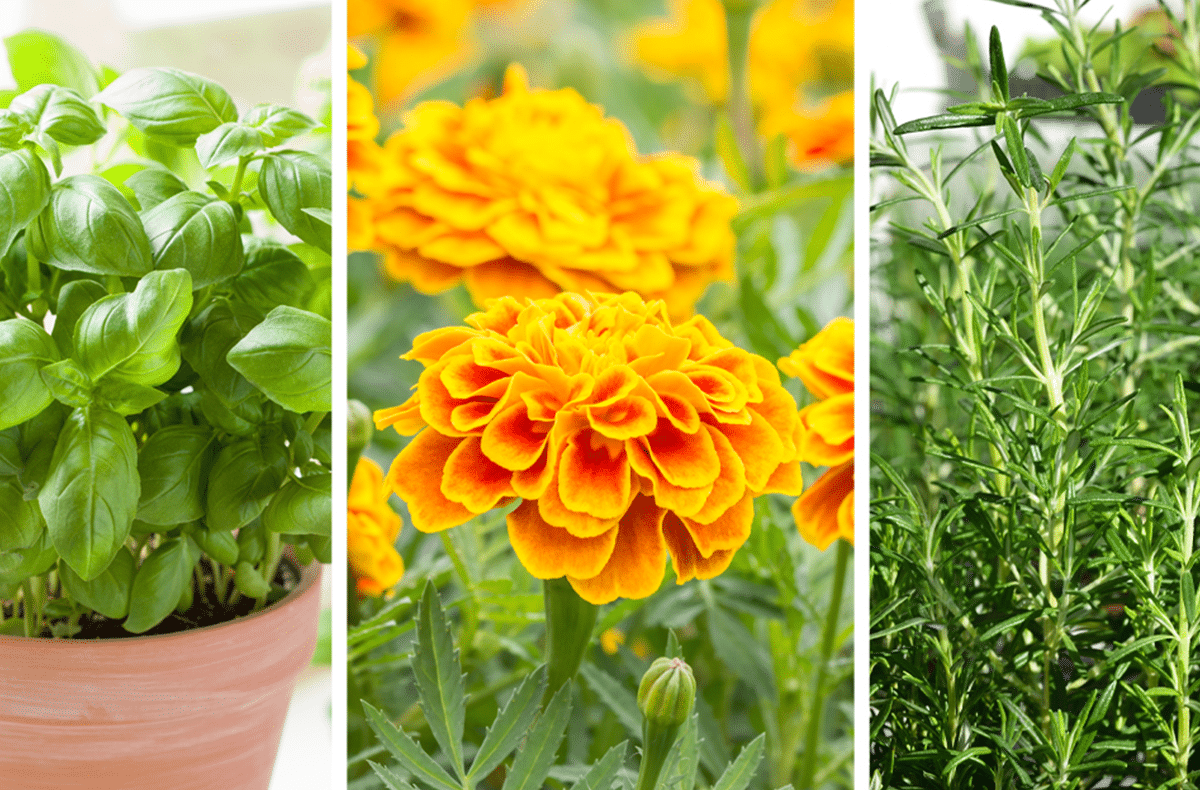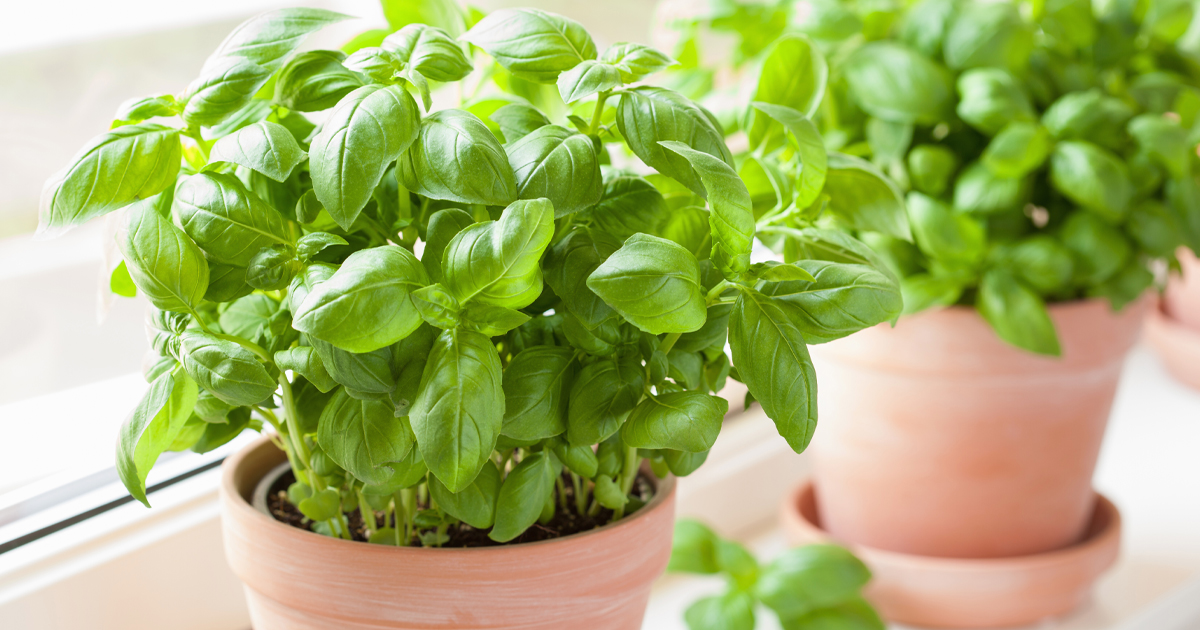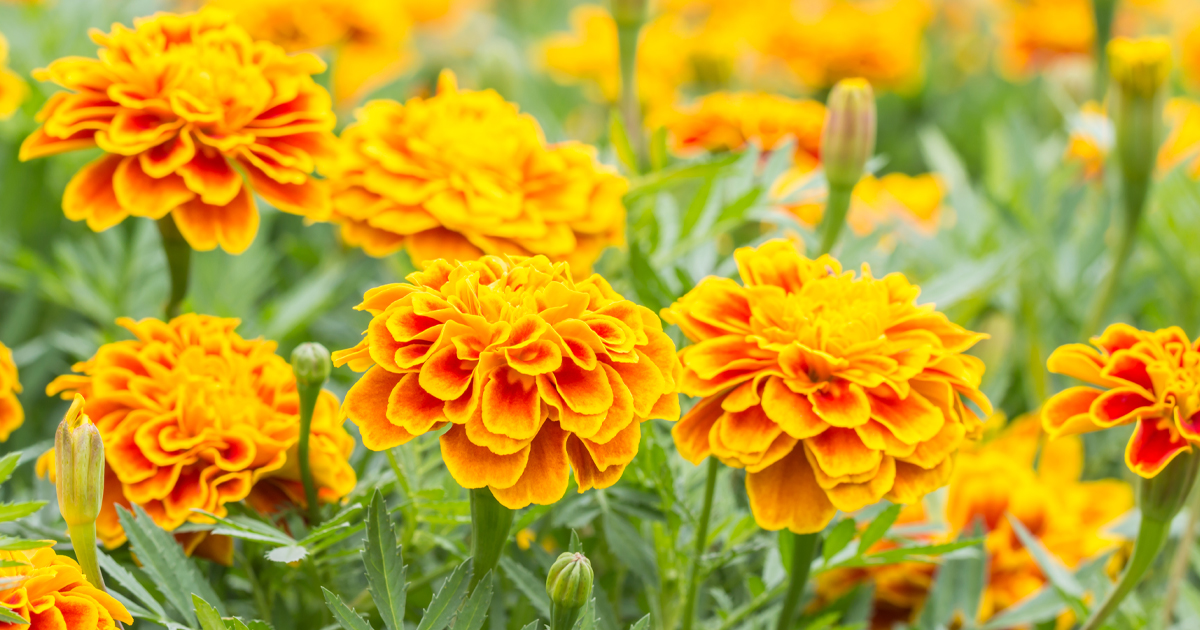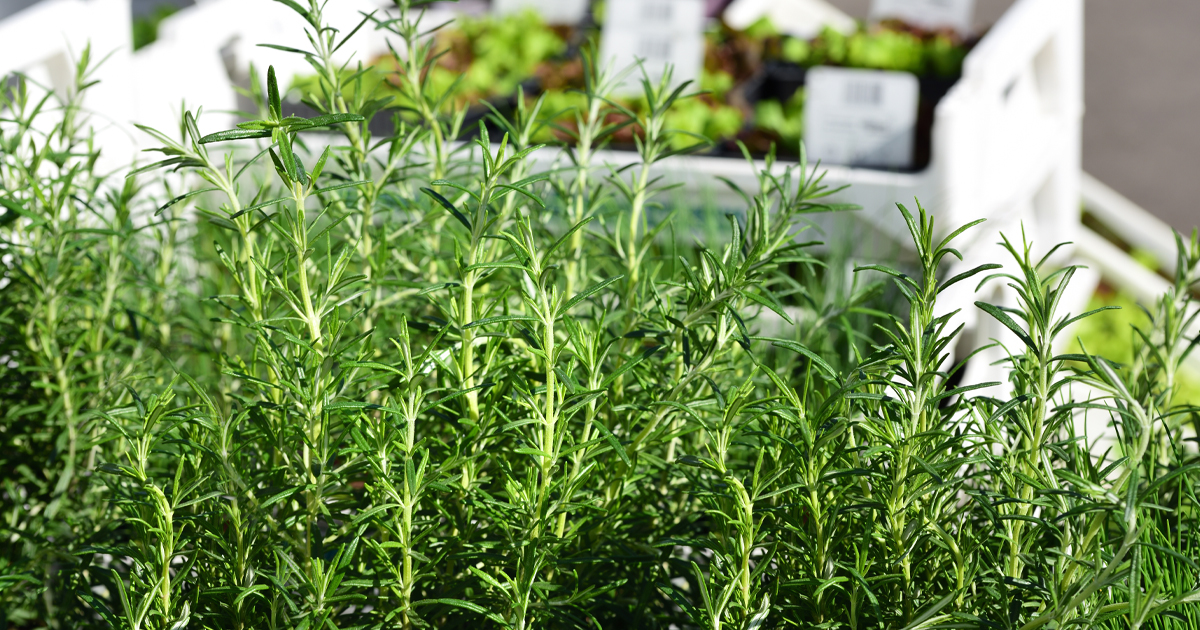10 plants that help keep irritating insects at bay in warm weather

After a long, cold winter, who doesn’t look forward to relaxing outside on a beautiful spring evening round a fire, sharing good food with friends and family? But there’s a downside – in the form of tiny flying fiends that deliver horribly itchy bites and have the nerve to crash-land on your food and in your drinks. A mosquito invasion is guaranteed to put a bit of a damper on the happiest occasion. And then there are flies…
FILTHY FLIES
Flies are more of a problem during the day, when any food left out will attract their attention. Although they don’t bite, they do pose a health threat due to hygiene.
NATURE TO THE RESCUE
So, in the interests of a peaceful, easy summer, free of itchy bites and tummy bugs, grow plants that naturally deter unwelcome visitors.
SCENT IS THE SECRET WEAPON
The oils contained in certain plants repel insects like mosquitoes and flies, so the trick is to have the right plants on hand and release their natural oils and scents by bruising, cutting or trimming. Before you go and sit outside on a balmy spring evening, pinch a few basil tips off or cut a few sprigs of lemon balm, rosemary, sage or mint. Snip off a few garlic stems or pick some marigolds.
Here’s our list of herbs and plants that irritating insects don’t like. They’re easy to grow and readily available.
ALLIUMS
Garlic, onions, chives and garlic chives are all part of the allium family of bulbs. They release a strong fragrance that’s mosquitoes and flies hate. Onions and garlic are best planted in the ground, but chives and garlic chives grow happily in containers.
Growing conditions: Full sun (or partial light shade), well-drained soil (avoid damp sites).
Bonus: Their flowers are beautiful and fragrant. And what would good food be without garlic and onions?

BASIL
Mosquitoes and flies hate basil. There are many different types but the easiest to grow is probably perennial basil, that forms a bush with woody stems. Sweet basil is an annual, and is a bit more fussy, needing a sheltered position. All types of basil grow happily in containers so you can place a pot or two in your braai area.
Growing conditions: Basil likes rich soil with good drainage in full sun, and needs to be kept damp.
Bonus: Basil is delicious on pizza!
CATNIP
Catnip is a member of the mint family that contains nepetalactone, a chemical loved by cats but detested by flies, mosquitoes and cockroaches. It’s an herbaceous perennial, meaning it dies down each year in winter but sends up new growth in spring.
Growing conditions: Easy to grow in full sun or partial shade, catnip is not fussy about soil as long as it’s well drained.
Bonus: If you have cats you’ll be endlessly entertained by their love affair with your catnip bush.
LAVENDER
We may love lavender, but moths, fleas, flies and mosquitoes don’t share our enthusiasm. If you hang tied bouquets of lavender at your doors and crush or rub the leaves occasionally it’ll help keep flies out of the house, and lavender bushes near your outdoor entertainment area will deter mosquitoes and moths. It grows well in containers as long as it doesn’t get waterlogged. If you’re a real mozzie magnet, rubbing your skin with fresh lavender leaves will keep them away.
Growing conditions: Lavender thrives in full sun (or light afternoon shade in very hot areas). It’s not fussy about soil, provided it’s well-drained.
Bonus: Beautiful flowers with a beautiful scent – and lavender leaves can be used in cooking in place of rosemary.
LEMON BALM
Lemon balm contains high levels of citronellal, a chemical that’s despised by gnats and mosquitos. As with lavender, you can rub crushed leaves directly onto your skin to deter those little bloodsuckers.
Growing conditions: It’s a perennial that likes fertile soil that’s kept damp, and prefers to be in a cooler part of the garden. Plants grown in full sun will be smaller and less succulent.
Bonus: Lemon balm will attract bees to your garden – and, chopped fine, it makes a great addition to salad dressing.
LEMONGRASS
Lemongrass contains citronella oil, one of the best-known insect repellents that’s used in many commercial products. Mozzies detest it.
Growing conditions: It likes fertile, well-drained soil, and lots of full sun for the oils in the leaves to develop fully. It’s a tropical plant that won’t do well in really cold areas. It grows well in containers or in the ground (it can grow taller than a metre, so containers must be big enough).
Bonus: Asian food! Think Thai green, red or yellow curry – but it’s used in lots of other equally delicious recipes.

MARIGOLDS
These hardy annuals are easy to grow from seed or seedlings. Mozzies don’t like the scent released by marigolds.
Growing conditions: These happy little plants are very undemanding, growing well in any sunny spot with good drainage, and equally at home in containers or the ground.
Bonus: The flowers are pretty (particularly planted near blue-flowered rosemary or lavender), and they attract beneficial insects.
MINT
This perennial herb is a great mosquito, fly and ant repellent. Dried leaves can be used inside your home to deter pests, and out in the garden it will keep mozzies away from you and other insects away from nearby plants. Cuttings root easily in water.
Growing conditions: Quite greedy for water, it’s best grown in containers as most types of mint can be very invasive out in the open, and once the roots take hold it’s not easy to get rid of. They like full sun to partial afternoon shade and aren’t fussy about soil if it’s well drained.
Bonus: Chopped mint added to yoghurt with a splash of lemon, crushed garlic, salt, black pepper and a dash of cumin is heavenly with any braai dish.
Warning: Pennyroyal, a member of the mint family and commonly used as a groundcover. It is also an excellent insect repellent – but it’s seriously toxic to animals, including dogs and cats, and there have been cases of people who have died after drinking pennyroyal ‘tea’. It can cause seizures, coma, organ failure and death. There are people who swear that, used in the right amounts and in the right way, it’s the best insect repellent, but its dangers outweigh the benefits, so give it a wide berth to be on the safe side.

ROSEMARY
Flies and mosquitoes are not fans of rosemary. When crushed or bruised the needle-like leaves of this perennial release a pungent scent that’s as unattractive to them as it’s delicious to us. The smoke from rosemary leaves thrown into the fire will also send the bugs scuttling!
Growing conditions: Rosemary does best in hot, dry climates. It likes well-drained composted soil and grows as well in containers as in the ground.
Bonus: It’s one of the few plants with blue flowers – and adds wonderful flavour to chicken, pork or lamb.
Related article: 3 Ways to dry herbs
SAGE
Sage has soft, greyish-green leaves with a strong aroma that’s not at all appreciated by mosquitoes and night crawlers. As with rosemary, the leaves thrown into a fire will create smoke that repels mozzies.
Growing conditions: Sage can be planted in the ground or containers. It likes well-drained soil enriched with compost, and medium to full sun.
Bonus: Have you ever tasted butternut squash with brown sage pumpkin-seed butter? Heaven on a plate!
Related article: How to replant seeds from food scraps
HOMEMADE INSECT REPELLENT
Roughly mince four cloves of fresh, raw garlic, cover them with mineral oil and let stand for 24 hours. Then remove the garlic chunks and add a litre of water to the oil. Strain and pour the mixture into a spray bottle and spray on exposed skin.
Related article: Keep your garden pest free, the natural way
Sources: treehugger.com, angi.com, healthline.com, gardeningknowhow.com, tipsbulletin.com, ncbi.nlm.nih.gov
BY LYNNE CLEMENT STAFFORD
Related articles

Latest Jet club magazine
We’ve got the latest trends, exciting prizes and exclusive savings just for you!
Jet Club will not pass your details to anyone else. By clicking the subscribe button you confirm you have read and agree to the Jet Club Terms and conditions and Jet Club Privacy Statement.
Subscribe

